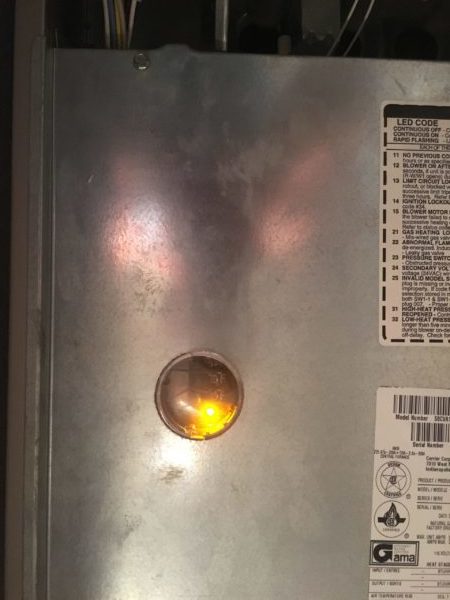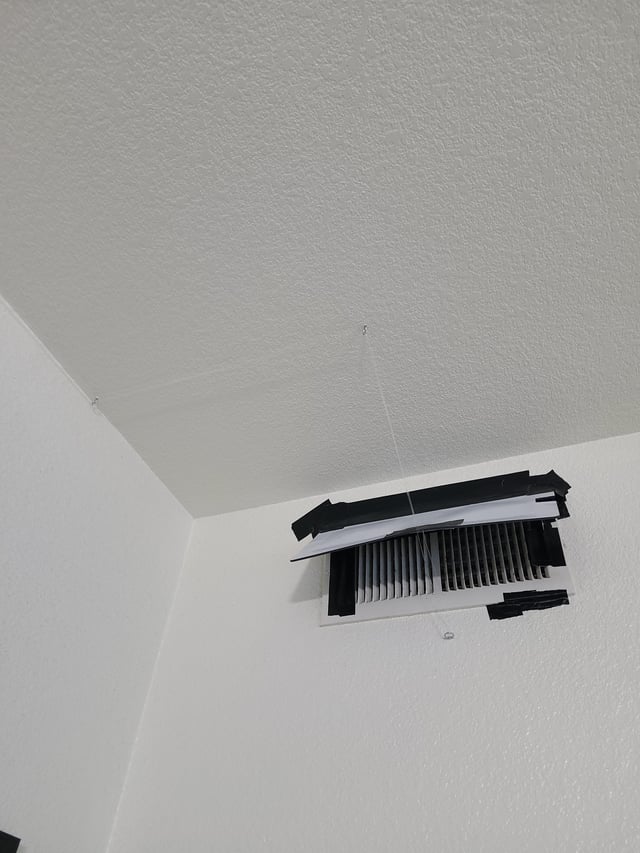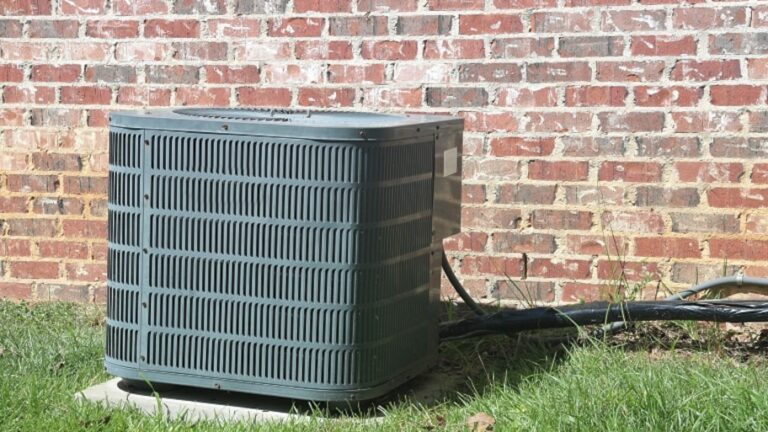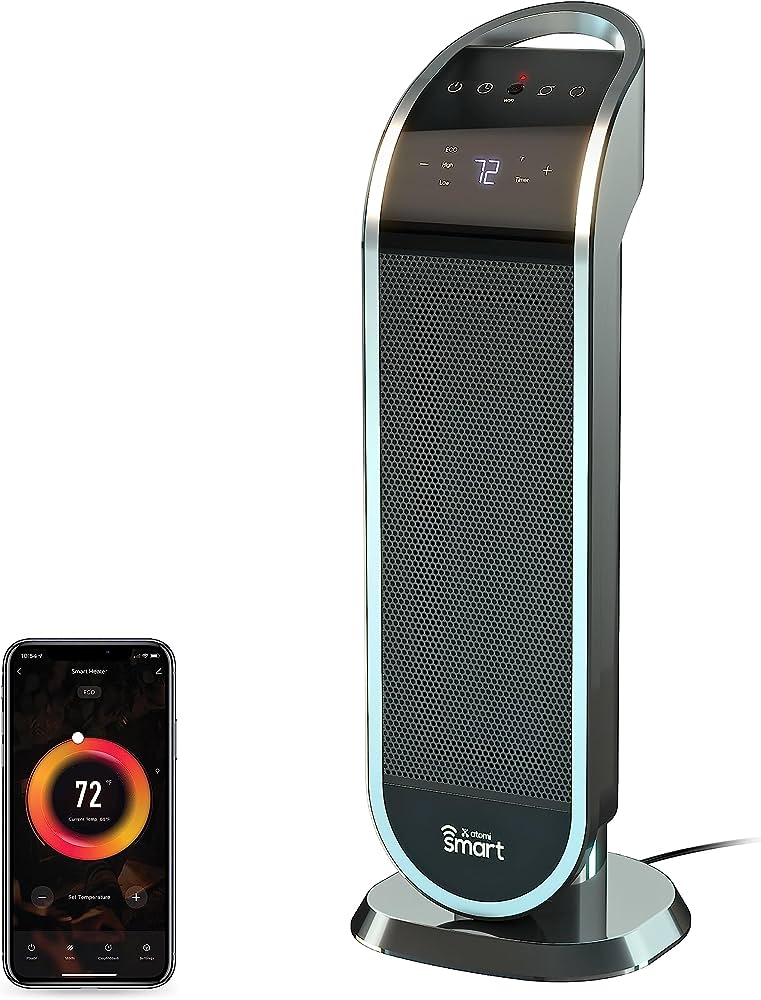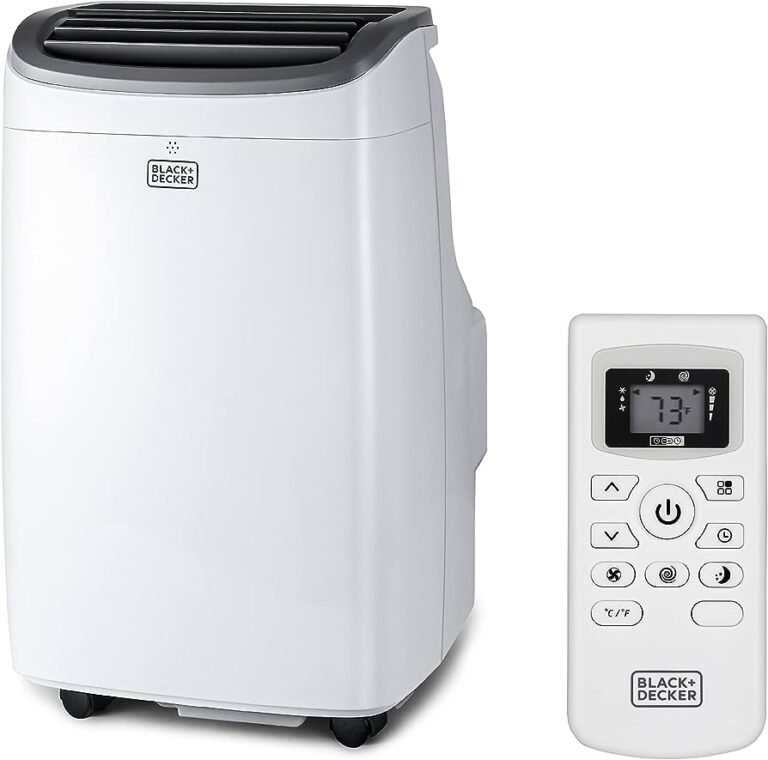Carrier Air Conditioner Solid Yellow Light: Troubleshooting Guide
When a Carrier air conditioner has a solid yellow light, it typically indicates an issue with the system, such as low refrigerant or a faulty compressor. This yellow light is a warning sign, indicating that there is a problem that needs to be addressed.
Understanding The Yellow Light On Carrier Air Conditioners
When you see a solid yellow light on your Carrier air conditioner, it usually indicates that there is a system issue. This could be due to low refrigerant levels or a faulty compressor.
When a yellow light appears on your Carrier air conditioner, it is an indication that there is an issue with the system. To understand what the yellow light means, let’s explore some common causes and troubleshooting steps:
What Does The Yellow Light Indicate On A Carrier Air Conditioner?
- Low refrigerant: One of the most common causes of a solid yellow light is low refrigerant levels in the air conditioner. This can occur due to a leak in the system.
- Faulty compressor: Another possible cause is a faulty compressor. The compressor is responsible for circulating refrigerant and if it malfunctions, it can trigger the yellow light.
- High pressure or low-pressure switch problem: The air conditioner has pressure switches that can detect if there is too much or too little pressure in the system. If there is an issue with these switches, it can cause the yellow light to illuminate.
- Electrical problem: Problems with the electrical wiring or components in the air conditioner can also trigger the yellow light.
Common Causes Of The Solid Yellow Light On A Carrier Air Conditioner:
- Low refrigerant level: A refrigerant leak can cause the yellow light to turn on. This issue will require professional repair as the leak needs to be located and fixed, and the refrigerant levels need to be replenished.
- Faulty compressor: If the compressor is faulty, it may not be able to properly circulate the refrigerant, leading to the yellow light. In these cases, you may need to have the compressor repaired or replaced.
- High or low-pressure switch problem: Issues with the pressure switches can cause the yellow light to come on. A technician will need to diagnose and repair the problem, which may involve replacing the faulty switch.
- Electrical problem: If there is a problem with the electrical wiring or components, it can trigger the yellow light. A professional HVAC technician will need to troubleshoot and resolve the electrical issue.
Remember, if you encounter a yellow light on your Carrier air conditioner, it is recommended to contact a qualified HVAC technician to properly diagnose and address the underlying issue. Ignoring the yellow light and continuing to use the air conditioner can potentially lead to further damage to the system.
Checking For Low Refrigerant Levels
When the solid yellow light appears on a Carrier air conditioner, it typically indicates a low refrigerant level or a faulty compressor. This issue needs to be addressed to ensure proper functioning of the system.
How To Determine If Your Carrier Air Conditioner Is Low On Refrigerant:
- Check for a solid yellow light on your air conditioner. This is often an indication of low refrigerant levels.
- Listen for any unusual noises coming from the unit, such as hissing or bubbling sounds. This can also be a sign of low refrigerant.
- Notice if the air conditioner is not cooling your home as effectively as it used to. Insufficient cooling can be a result of low refrigerant levels.
Steps To Diagnose And Fix Low Refrigerant Levels In A Carrier Air Conditioner:
- Inspect for any visible leaks: Examine the refrigerant lines and coils for any signs of leakage, such as oil stains or wet spots. If you find any, it’s important to address and fix the leaks before adding more refrigerant.
- Check the pressure: Use a refrigerant pressure gauge to measure the pressure in the system. Low pressure can indicate low refrigerant levels. Refer to your Carrier air conditioner’s manual to determine the specific pressure range you should be looking for.
- Add refrigerant: If the pressure is below the recommended range, you may need to add more refrigerant. This should be done by a professional HVAC technician who is trained in handling refrigerants safely and correctly. Attempting to add refrigerant yourself can be dangerous and may void your warranty.
- Perform a system check: After adding refrigerant, the HVAC technician will conduct a system check to ensure that the levels are now optimal. They will also check for any other issues that may be affecting the performance of your air conditioner.
Importance Of Maintaining Proper Refrigerant Levels:
- Energy efficiency: Proper refrigerant levels ensure that your Carrier air conditioner operates efficiently, resulting in lower energy consumption and reduced utility bills.
- Optimal cooling performance: Adequate refrigerant levels allow your air conditioner to cool your home effectively, providing a comfortable indoor environment even during hot weather conditions.
- Avoid costly repairs: Low refrigerant levels can cause your air conditioner to work harder, leading to increased wear and tear on the system. Regularly maintaining proper refrigerant levels can help prevent expensive repairs and extend the lifespan of your Carrier air conditioner.
- Protect the environment: Refrigerants used in air conditioners can be harmful to the environment if released into the atmosphere. By maintaining proper refrigerant levels, you can help prevent leaks and minimize the impact on the environment.
Regular maintenance by a qualified HVAC technician, including checking and maintaining proper refrigerant levels, is essential to ensure the optimal performance and longevity of your Carrier air conditioner.
Troubleshooting A Faulty Compressor
If you notice a solid yellow light on your Carrier air conditioner, it could indicate a problem with the system, such as low refrigerant or a faulty compressor. Troubleshooting is necessary to diagnose and fix the issue.
Signs Of A Faulty Compressor In A Carrier Air Conditioner:
- Loud, unusual noises coming from the unit, such as banging or rattling, can indicate a faulty compressor.
- A decrease in cooling efficiency or weak airflow could be caused by a malfunctioning compressor.
- If the air conditioner is not able to reach the desired temperature or if it takes longer than usual to cool the room, it may be due to a faulty compressor.
- Excessive condensation or leaks around the air conditioning unit could be a sign of a compressor issue.
Steps To Troubleshoot And Repair A Faulty Compressor:
- Check if the air conditioner is receiving power by ensuring that the circuit breaker is not tripped and that the unit is plugged in properly.
- Inspect the air filter and clean or replace it if necessary, as a dirty filter can put strain on the compressor.
- Examine the condenser coil for dirt, debris, or blockages and clean it if needed, as this can affect the compressor’s performance.
- Check the refrigerant level in the air conditioner and add more if it is low. Low refrigerant levels can cause the compressor to work harder and potentially fail.
- If these troubleshooting steps do not resolve the issue, it is recommended to contact a professional HVAC technician to diagnose and repair the faulty compressor.
Benefits Of Regular Compressor Maintenance:
- Regular maintenance can help prolong the lifespan of the compressor, ensuring that the air conditioner functions efficiently for a longer period of time.
- Cleaning or replacing air filters regularly can prevent dust and debris from clogging the compressor, allowing it to work smoothly.
- Inspecting and cleaning the condenser coil can improve the overall performance of the compressor and prevent unnecessary strain on the unit.
- Checking the refrigerant levels and adding more as needed can prevent compressor failure and maintain optimal cooling efficiency.
- Regular maintenance can also help identify potential issues with the compressor early on, allowing for timely repairs and avoiding costly breakdowns.
Remember, proper maintenance and timely repairs are crucial in ensuring the longevity and efficiency of your Carrier air conditioner. If you notice any signs of a faulty compressor, it’s always best to seek professional assistance to avoid further damage.
Resetting The Carrier Air Conditioner
When the solid yellow light appears on your Carrier Air Conditioner, it indicates that the system is in standby mode. The fan will not operate in this mode, but if the light blinks, it means everything is normal and the furnace has power.
Finding The Reset Button On A Carrier Air Conditioner Unit:
- Locate the air conditioner’s compressor unit.
- Look for a small red button, usually positioned near the power switch or control panel.
- The reset button may be labeled as “Reset” or identified by a circular arrow symbol.
- Take note of the button’s position for easy accessibility in case of future resets.
Step-By-Step Guide To Reset A Carrier Air Conditioner:
- Ensure that the air conditioner is turned off by switching off the power supply.
- Locate the reset button on the compressor unit.
- Press and hold the reset button for a minimum of 3-5 seconds.
- Release the button once you see the air conditioner’s display or panel lights blinking or changing.
- Wait for a few minutes to allow the air conditioner to reset.
- Turn the power supply back on and switch on the air conditioner.
- Observe if the yellow light has disappeared or if the functionality of the unit has improved.
Common Issues That Can Be Resolved By Resetting The Air Conditioner:
- Frequent power surges or fluctuations can cause the air conditioner to malfunction. Resetting the unit can help restore its proper functioning.
- A tripped circuit breaker or blown fuse can result in the yellow light. Resetting the air conditioner can help resolve this issue.
- Error codes or error messages displayed on the unit’s control panel may indicate a need for a reset to clear the system’s memory.
- In some cases, a temporary glitch or software error can cause the system to display the yellow light. A reset can resolve such issues.
- Low refrigerant levels or a faulty compressor can trigger the yellow light. While a reset may not solve these issues entirely, it can provide a temporary fix and allow the unit to operate until professional assistance is sought.
Remember that resetting the air conditioner should be done cautiously, and if the issue persists after multiple resets, it is recommended to consult a professional technician for further diagnostics and repairs.
Gas Valve Solenoid Issues
The solid yellow light on a Carrier air conditioner usually indicates that the system is in standby mode. This means that the fan will not operate during this time.
Role Of The Gas Valve Solenoid In A Carrier Air Conditioner:
- The gas valve solenoid is a crucial component in a Carrier air conditioner as it controls the flow of gas to the burner.
- It regulates the fuel supply to ensure efficient heating or cooling of the indoor environment.
- When the thermostat signals the need for heating or cooling, the gas valve solenoid opens and allows gas to flow to the burner for combustion.
Possible Problems With The Gas Valve Solenoid And Their Symptoms:
- Clogged gas valve solenoid: If the gas valve solenoid is clogged, it may cause a disruption in the gas flow, resulting in the air conditioner not heating or cooling properly.
- Faulty gas valve solenoid: A faulty solenoid can prevent gas from flowing to the burner, leading to a system malfunction.
- Malfunctioning ignition control: If the ignition control fails to send the signal to the gas valve solenoid, it can result in the air conditioner not igniting or operating.
- Symptoms of gas valve solenoid issues may include a solid yellow light on the air conditioner, no heat or cool air, and frequent system shutdowns.
Solutions For Fixing Gas Valve Solenoid Issues In A Carrier Air Conditioner:
- Clean the gas valve solenoid: If the solenoid is clogged, it can be cleaned to remove any debris or sediment that may be obstructing the gas flow.
- Replace the gas valve solenoid: If the solenoid is faulty and cannot be repaired, it will need to be replaced with a new one to restore proper functionality.
- Check the ignition control: Ensure that the ignition control is functioning correctly and sending the signal to the gas valve solenoid. Replace the control if necessary.
- Consult a professional: If you are unsure about how to troubleshoot or repair gas valve solenoid issues, it is recommended to seek assistance from a qualified HVAC technician.
Remember, addressing gas valve solenoid issues promptly is essential to ensure the proper functioning of your Carrier air conditioner. Regular maintenance and inspection can also help prevent these problems from occurring in the first place.
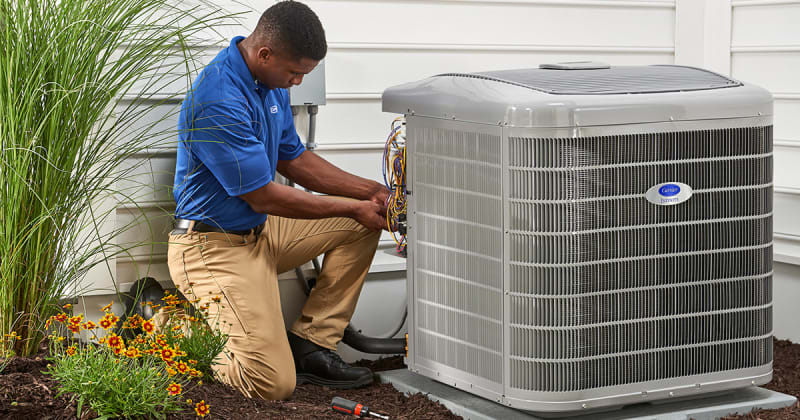
Credit: www.carrier.com
Frequently Asked Questions For Carrier Air Conditioner Solid Yellow Light
What Does Yellow Light On Air Conditioner Mean?
When the yellow light is on, it means there is an issue with the air conditioner. This could be due to low refrigerant or a faulty compressor.
What Is The Yellow Solid Light On A Carrier Furnace?
When the yellow light on a Carrier furnace is solid, it means that the furnace is stuck in high-fire mode.
Where Is The Reset Button On A Carrier Ac Unit?
The reset button on a Carrier AC unit can typically be found inside the air conditioner’s compressor.
Why Won T My Carrier Air Conditioner Turn On?
If your Carrier air conditioner won’t turn on, it could be due to low refrigerant or a faulty compressor. Check for these issues.
Conclusion
If you notice a solid yellow light on your Carrier air conditioner, it is an indication that there might be an issue with the system. This warning light commonly suggests that the unit is low on refrigerant or has a faulty compressor.
It is important to address these problems promptly to ensure the efficient operation of your air conditioner. If you are unsure of the cause of the yellow light, it is recommended to consult a professional technician for a thorough inspection and diagnosis.
Neglecting the issue could lead to further damage and eventually result in a complete breakdown of your air conditioning system. By addressing the problem promptly, you can potentially save money on costly repairs and extend the lifespan of your Carrier air conditioner.
Regular maintenance and prompt attention to warning lights are key to keeping your air conditioner in optimal condition for years to come.

